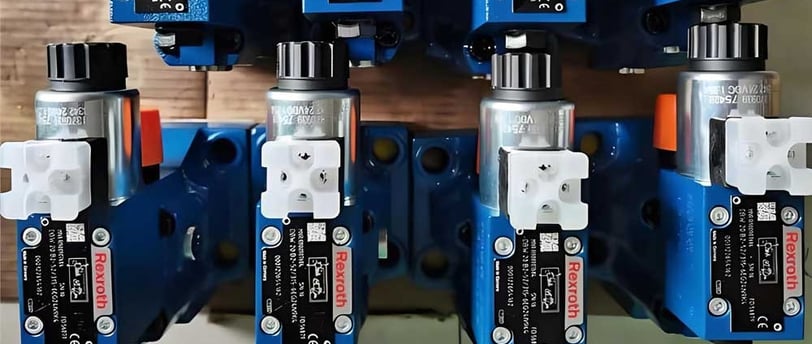Rexroth Hydraulic Valve Common Faults and Troubleshooting Methods: Rapid Diagnosis and Problem Solving
11/30/20242 min baca


Introduction to Rexroth Hydraulic Valves
Rexroth hydraulic valves are critical components in numerous hydraulic systems, serving to control directions, pressures, and flows of hydraulic fluids. Understanding how these valves function is vital for ensuring optimal performance and longevity. However, like all mechanical components, they are prone to faults that can disrupt effectiveness. This blog post outlines common issues encountered with Rexroth hydraulic valves and offers troubleshooting methods for rapid diagnosis and problem-solving.
Common Faults in Rexroth Hydraulic Valves
Identifying the specific faults in Rexroth hydraulic valves is crucial for maintaining system integrity and efficiency. Some of the prevalent issues include:
- Leakage: Often caused by wear and tear of seals or incorrect installation.
- Sticking Spool: This can occur due to dirt, debris, or corrosion within the valve body, preventing the spool from moving freely.
- Pressure Drop: A significant drop in pressure can indicate internal wear or malfunctioning components within the valve.
- Noisy Operation: Unusual sounds during valve operation can signal mechanical issues or incorrect fluid levels.
Troubleshooting Methods
To effectively address these faults, a structured troubleshooting approach can be employed. Here are some steps to help you diagnose and solve issues with Rexroth hydraulic valves:
1. Visual Inspection
Start with a thorough inspection of the valve and surrounding system. Look for signs of leakage, damaged hoses, or loose fittings. A visual assessment could help identify immediate issues before further examination.
2. Check Fluid Levels and Quality
Ensure that the hydraulic fluid levels are adequate and that the fluid is free from contaminants. Old or contaminated fluid can lead to numerous valve issues, including sticking spools and inadequate lubrication.
3. Test Pressure and Flow
Use appropriate gauges to test the pressure and flow rates in the system. Low pressure readings can indicate a faulty valve or improper setup. Comparing these readings with the manufacturer’s specifications can help pinpoint the issue.
4. Clean and Replace Components
If sticking or noise is evident, disassemble the valve for cleaning. Remove any dirt or debris that may be hindering performance. In cases of severe wear, consider replacing seals and other compromised parts.
Conclusion
In conclusion, understanding common faults and implementing effective troubleshooting methods can prolong the lifespan of Rexroth hydraulic valves. Regular maintenance and prompt diagnosis of issues not only enhance performance but also save on costly repairs. By following the steps outlined above, operators can ensure that their hydraulic systems remain efficient and reliable, minimizing downtime and maximizing productivity.
